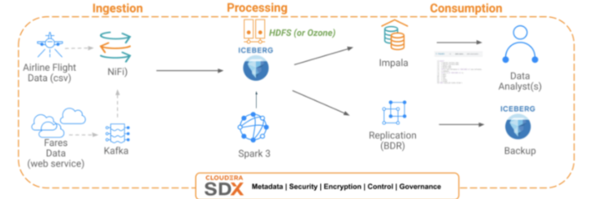Cloudera in the power industry

7 od 10 bigest
of the world's power companies use the Cloudera platform.
The world's largest
a diversified power company uses the Cloudera platform.
Thoroughness and expertise
confirmed in a large number of projects in the power industry
industry.
Machine learning
at petabyte scale, unlocking time series data from SCADA, GIS and CIS systems.
Data and analytics to energy optimization and sustainability

Why Cloudera?
Data management challenges and business needs
Hybrid and multi-cloud flexibility
Cloudera Data Platform (CDP) offers the same functionality in a local data center (on-prem) and on all major public cloud services (AWS, Azure, Google Cloud). It provides maximum flexibility, prevents vendor lock-in, and enables data and analytics to be stored where it makes the most sense, whether for cost, performance, or security.
A single platform for all data (End-2-End)
Instead of using multiple different tools for different tasks, Cloudera offers everything in one place. In addition to storage; it also covers: Data Ingestion; Real-time Data Processing (DataFlow); Data Warehousing; Machine Learning
Open Source with enterprise support
The platform is based on the most popular and proven open-source technologies (e.g. Apache Spark, Hadoop, NiFi, Kafka) packaged into a stable, tested and secure product with professional support, making it easy to implement, manage and maintain in a business environment.
Superior security and data management (Security & Governance)
Through the Shared Data Experience (SDX) concept, Cloudera provides centralized security, access management and metadata tracking on all data, regardless of where it resides (on-prem, cloud).

Referentna time-series arhitektura
Challenges
- Vast amounts of high-frequency sensor data
- Difficulties with storage and management over time (due to the sheer volume of data)
- Data timestamps are often out of sync because they originate from different time zones
- Missing or inconsistent data is common
- Numerous and diverse source data formats, often industry-specific, not readable by standard tools
Business needs
- Availability of both raw and transformed data for the needs of various business processes
- Consolidated data from heterogeneous systems to enable decision-making based on all relevant information instead of a fragmented view from just one system
- Standardized data formats (preferably in relational form) to make them available and usable throughout the organization
- Improvement of processes related to regulatory reporting